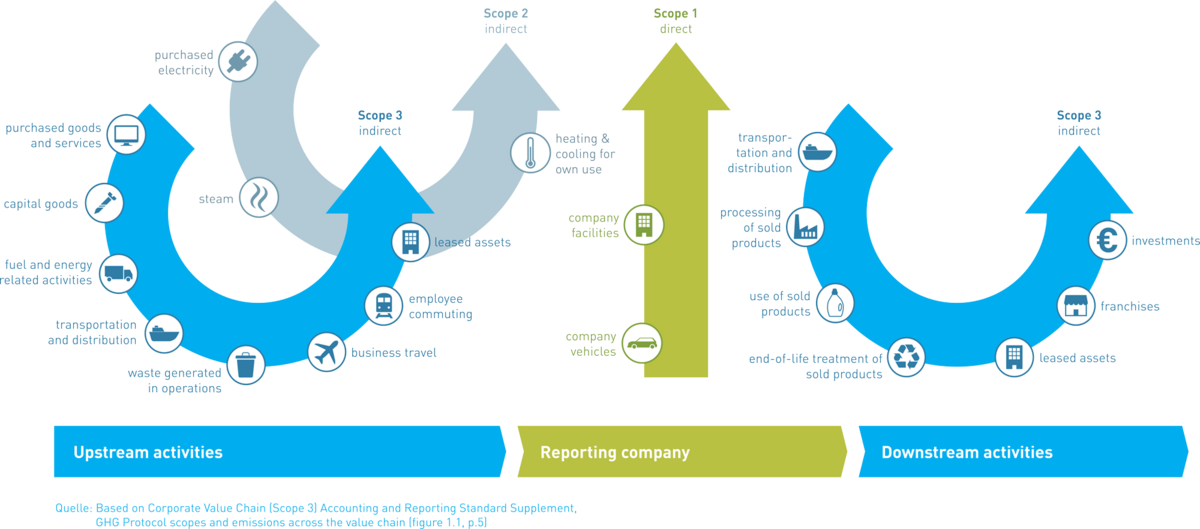Carbon footprints for companies and their products
In addition to high-quality life cycle assessments, our experts can also determine the corporate carbon footprint of your company or the product carbon footprints of your products.

The difference is that the life cycle assessment includes the total impact of products or processes on the environment, while the carbon footprint is focused on determining the CO2 footprint.
Product carbon footprint according to ISO 14067
The product carbon footprint, also known as ‘CO2 footprint’, refers to the amount of greenhouse gas emissions produced throughout the life cycle of a product or service in a specific application and relative to a specific functional unit.
Corporate carbon footprint according to ISO 14064
This measures the total amount of all the greenhouse gas emissions produced by a company along the value chain. These include the company's direct emissions (Scope 1), for example from production, and its indirect emissions, for example from the electricity and heat it purchases (Scope 2) and/or from the downstream supply chain (Scope 3).

Your company, product or service database is essential for performing a life cycle assessment, a product carbon footprint or a corporate carbon footprint. WESSLING uses recognised, high-quality databases. Using recognised life cycle assessment software, we have access to one of the most extensive LCA databases in this field. These have a volume of 12,500 data sets, which are updated annually. In this way we make sure you get the best possible result.
We determine your carbon footprint.
- Timo Wobbe
- +49 2505 89-210
- timo.wobbe@wessling-ce.de

„Do you want to report according to a standard other than the ones mentioned here, or do you have ideas of your own? Our team will be happy to support you in this as well. Please do not hesitate to contact us.“
Our expert regarding carbon footprint
- Bastian Bartsch
- +49 2505 89-273
- bastian.bartsch@wessling-ce.de




